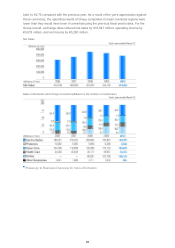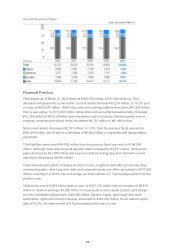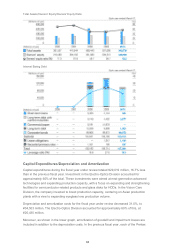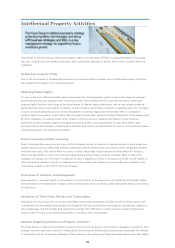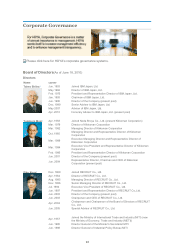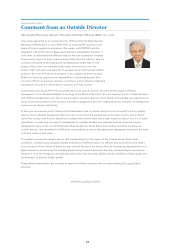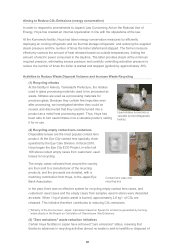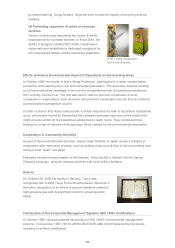Pentax 2010 Annual Report Download - page 39
Download and view the complete annual report
Please find page 39 of the 2010 Pentax annual report below. You can navigate through the pages in the report by either clicking on the pages listed below, or by using the keyword search tool below to find specific information within the annual report.
3C-SiC wafers
Connectors for optical
communications
Upper:microfiberscope with
an external diameter of
0.8mm.
lower:FNL-7RP3, existing
product with smallest
diameter (Φ2.4mm at the tip
of rigid part)
in automobiles and home appliances such as air conditioners to
help combat global warming. Taking volume production efficiency
into account, Hoya is currently developing six-inch wafers and
testing and evaluating the power devices that will be the end
product.
Optical Communications Parts
As the FTTH (Fiber to the Home) environment widens around the
world, Hoya has developed a module for converting optical signals
to electrical ones at optical communication access points that is
compliant with GE-PON/G-PON2, a high-speed optical
communications standard. By building a functional device on top
of a wafer, Hoya has succeeded in creating products that are
significantly smaller than existing products. In fiscal 2010, the
Company received approval from customers and launched
product shipments. Hoya first invested in this technology in 2005, and produced the first product
through joint development with the former Xponent Photonics, Inc., a U.S. company that
merged with Hoya in 2008. As optical networks continue to develop going forward, the market is
expected to grow to the ¥10 billion scale.
2 GE-PON/G-PON (Gigabyte Passive Optical Network): A technology that enables high-speed transmission of
1.25-2.5 gigabyte per second over fiber optic lines and networks.
Biocompatible Materials
Hoya is researching biocompatible materials for ophthalmological applications. Hoya already
has a visual correction lens business that handles intraocular lenses (IOLs) and contact lenses.
The Company is now developing materials that are more durable and functional and that are
better for the eyes. As part of this research, Hoya is investigating an artificial crystalline lens
material that fills the crystalline lens capsule. This material has the potential to regulate visual
acuity and is expected to become a therapeutic method on a par with IOLs.
Microfiberscope with 0.8mm external diameter
In the field of endoscopy, Hoya is working to develop component
technologies and products that will allow minimally invasive
procedures, thereby reducing discomfort and the burden on the
patient, and that will enable observation of minute lesions. The
challenge lies in developing small yet high-resolution imaging
devices and advanced image processing technologies.
In the year under review, Hoya developed a microfiberscope with
an external diameter of 0.8mm. The Company now plans to
incorporate this technology in endoscopic systems for the
diagnosis and treatment of peripheral lung cancer and other
diseases.
Hoya's Seven Core Technologies
HOYA Annual Report 2010
38


